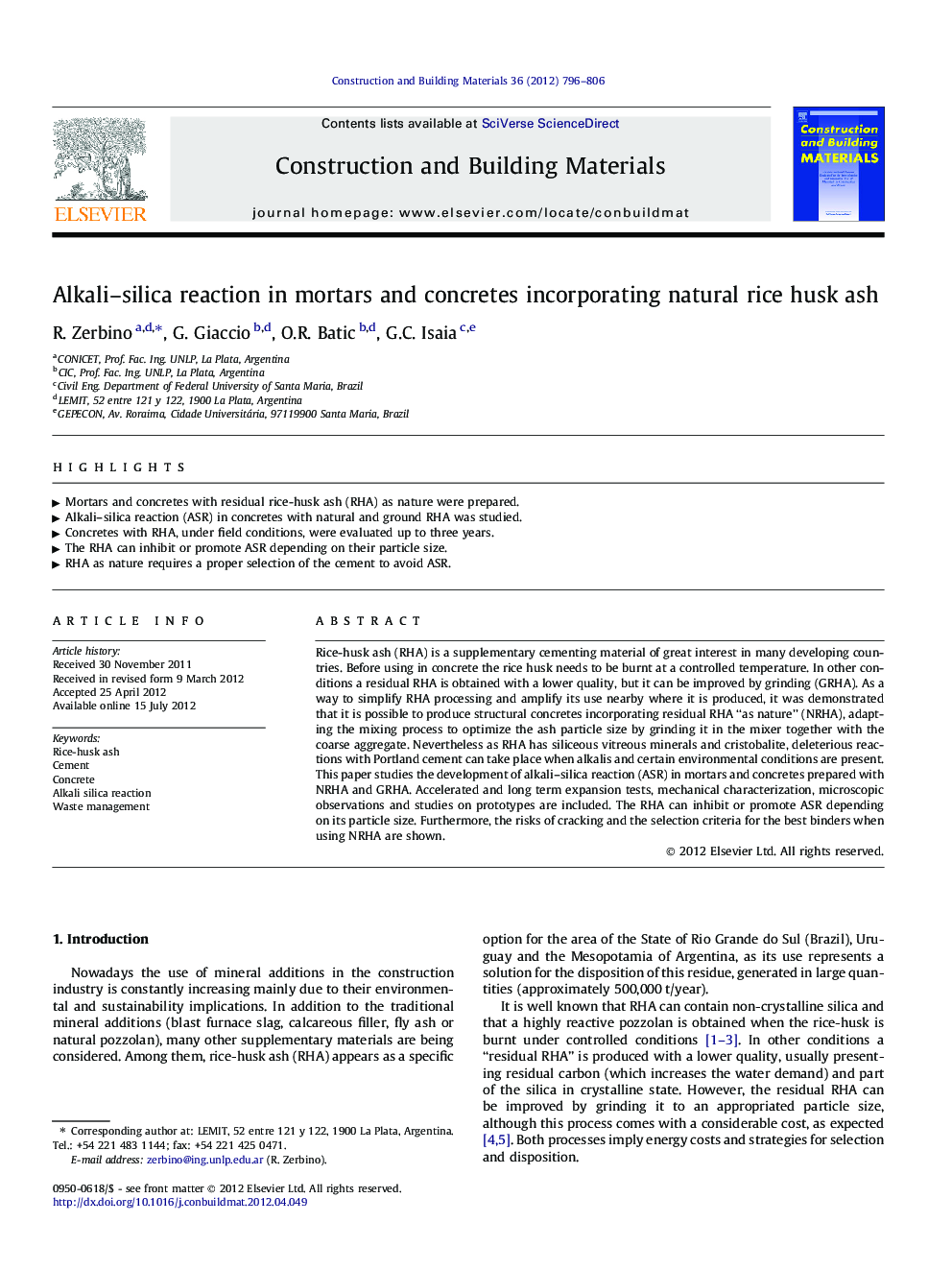| Article ID | Journal | Published Year | Pages | File Type |
|---|---|---|---|---|
| 258683 | Construction and Building Materials | 2012 | 11 Pages |
Rice-husk ash (RHA) is a supplementary cementing material of great interest in many developing countries. Before using in concrete the rice husk needs to be burnt at a controlled temperature. In other conditions a residual RHA is obtained with a lower quality, but it can be improved by grinding (GRHA). As a way to simplify RHA processing and amplify its use nearby where it is produced, it was demonstrated that it is possible to produce structural concretes incorporating residual RHA “as nature” (NRHA), adapting the mixing process to optimize the ash particle size by grinding it in the mixer together with the coarse aggregate. Nevertheless as RHA has siliceous vitreous minerals and cristobalite, deleterious reactions with Portland cement can take place when alkalis and certain environmental conditions are present. This paper studies the development of alkali–silica reaction (ASR) in mortars and concretes prepared with NRHA and GRHA. Accelerated and long term expansion tests, mechanical characterization, microscopic observations and studies on prototypes are included. The RHA can inhibit or promote ASR depending on its particle size. Furthermore, the risks of cracking and the selection criteria for the best binders when using NRHA are shown.
► Mortars and concretes with residual rice-husk ash (RHA) as nature were prepared. ► Alkali–silica reaction (ASR) in concretes with natural and ground RHA was studied. ► Concretes with RHA, under field conditions, were evaluated up to three years. ► The RHA can inhibit or promote ASR depending on their particle size. ► RHA as nature requires a proper selection of the cement to avoid ASR.
